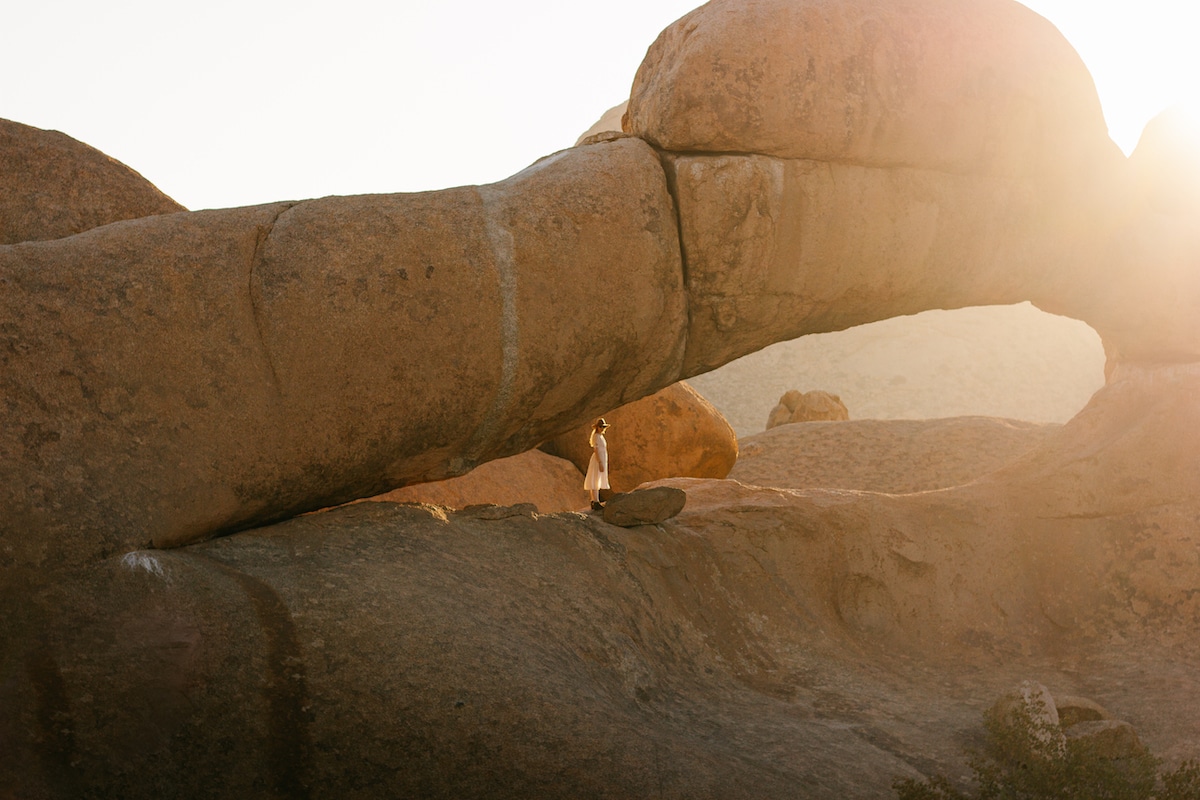Besides being the second least densely populated country in the world, Namibia also has the oldest desert, tribes, and the tallest dunes on the planet. There are many reasons to be intrigued by this African gem’s versatility. I have compiled a 10-day travel guide to Namibia, Sossusvlei, and Etosha Wildlife Reserve for you.
Arriving in Namibia: Windhoek
First encounter with the wild & free
Always inspired by the talent of @helloemilie and @jasoncharleshill, I decided to join in on their adventurous journey around Namibia. However, my African story begins in Cape Town, where I struggle to catch a flight. Fuel struggles, according to the locals patiently waiting next to me. It happens all the time, they assure me. Snacks and a good read get me through the day. Finally, about 6 hours later, the aircraft is ready for take-off. Sort of, cause to my big surprise, it gets fumigated with all of us on board.
The sun begins to set when I set foot on Namibian ground. The neverending flux of sand eagerly awaits to unleash its striking beauty. Namibia’s national animal, the Oryx, stares at me blankly as the taxi makes its way to the hotel. Chills down my spine. I’m in the wild, I sigh.
In the morning, a Land cruiser awaits to take me and the crew further away from civilization, into the depths of the world’s oldest dunes.
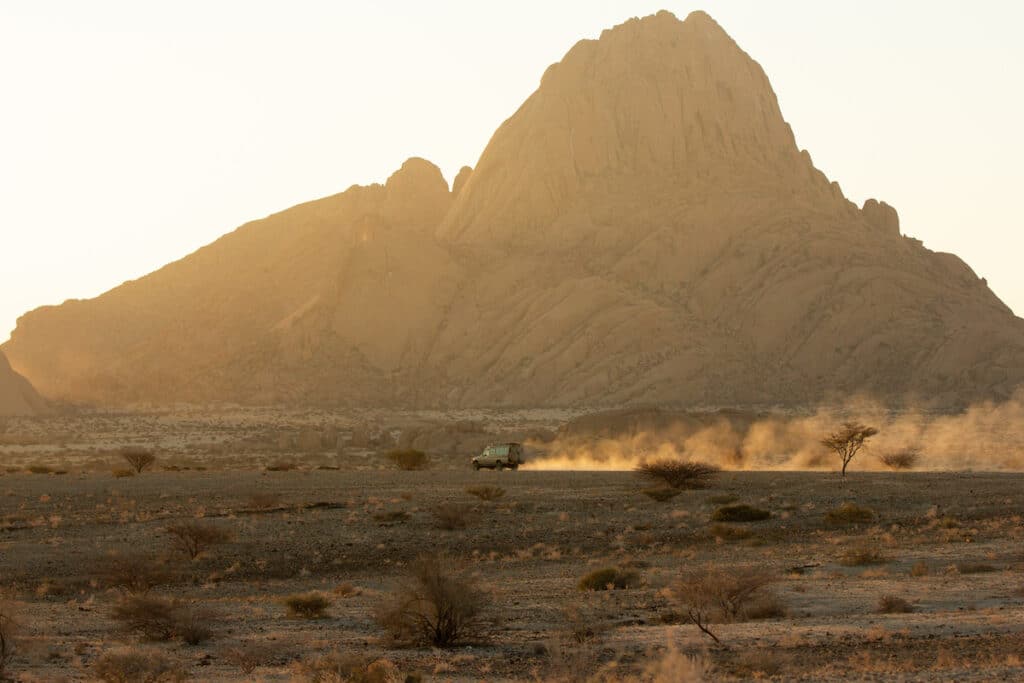
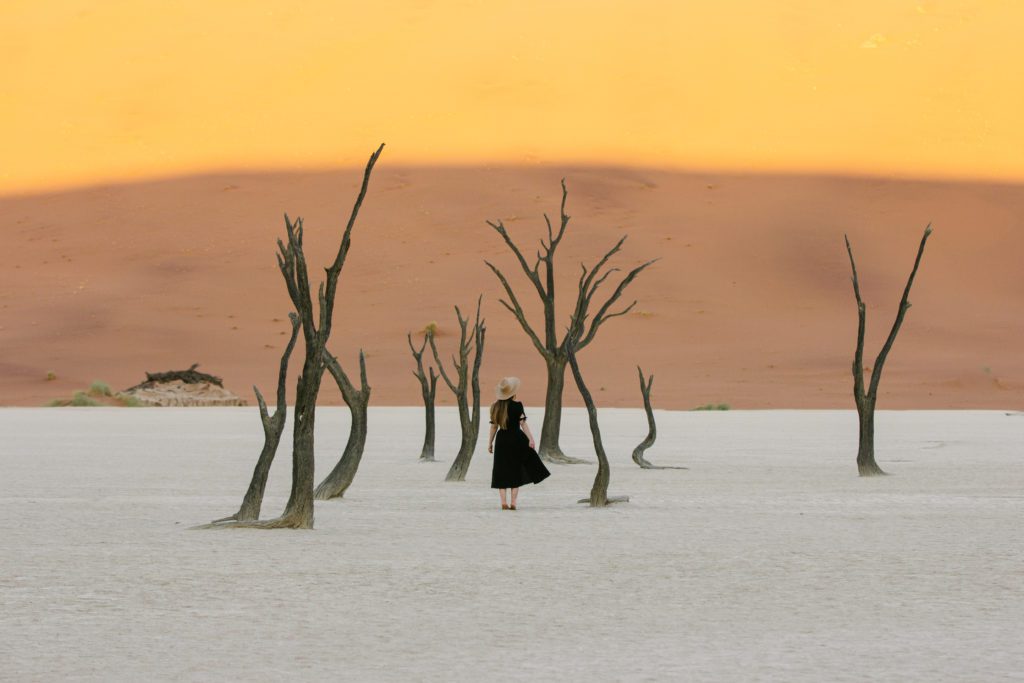
First Stop: Sossusvlei
The first thing that strikes me about Namibia is… the calmness of the place. It can get literally get dead quiet at times. You can drive around for hours without seeing another person, animal, or car. It’s scary at first but certainly refreshing in the long run. Off-the-beaten-track destinations are rare these days, and I came to love them the most.
The journey officially kicks off at the Namib Naukluft National Park, where the iconic Sossusvlei and the surrounding dunes turn us into daydreamers. No picture does it justice. The so-called Deadvlei looks so much bigger and better in real life. With little to no water in the Namib desert, the trees in the Sossusvlei did not survive the heat. Instead of decomposing, they dried out without vanishing from the earth. The plan is to visit the place twice, first at sunset and the following morning at dawn. The night’s temperature drops below 5°C, and it’s still dark when we arrive. So we’re the first ones there.
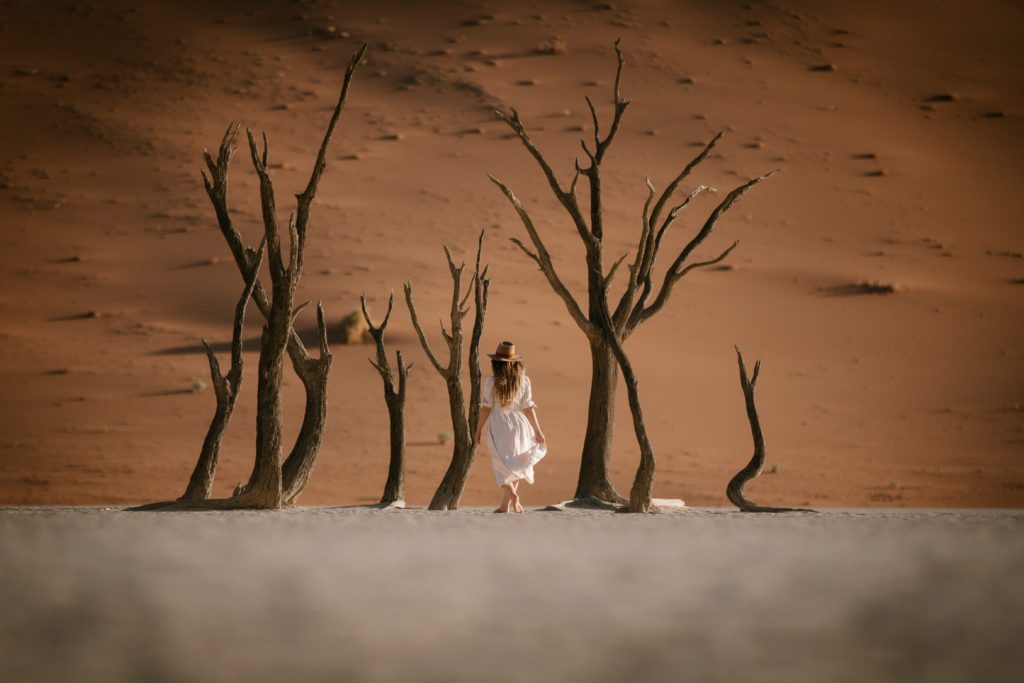

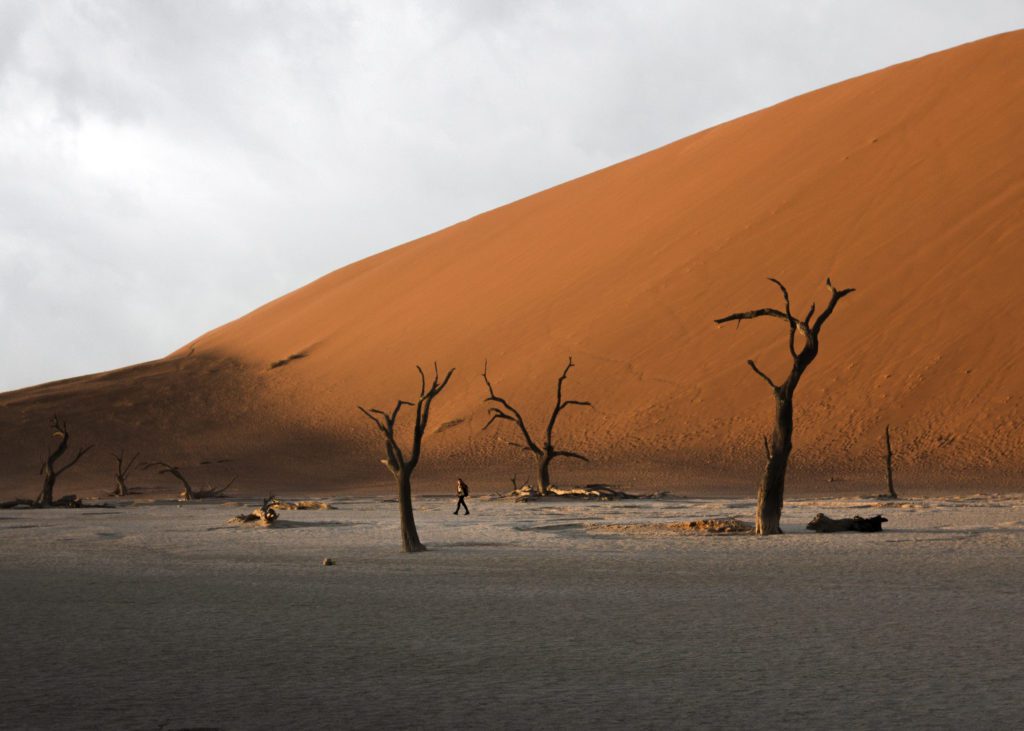
Both times are spectacular for photography, especially as the colors of the dunes change by the hour. The setting is surreal, trust me. Pitch-black skeletons in contrast with a pink glow emerging from behind the burnt orange colored dunes won’t leave a single soul untouched. If you like a good hike, you will definitely enjoy Dune 45 and Big Daddy, they are the most popular ones. We swop the climb for a helicopter flight above the Sossusvlei. My first heli flight ever! So cool!
Astrophotography
At night we gaze at the stars. With almost no light pollution, the night skies in Nambia are the darkest on Earth. Good to know as well: Camping out in Sesriem goes hand in hand with hungry wild animals looking for food. The howling jackals scare the bejesus out of me, but I’m equally excited to hear them again the following night. Perks of sleeping in the desert, I guess.


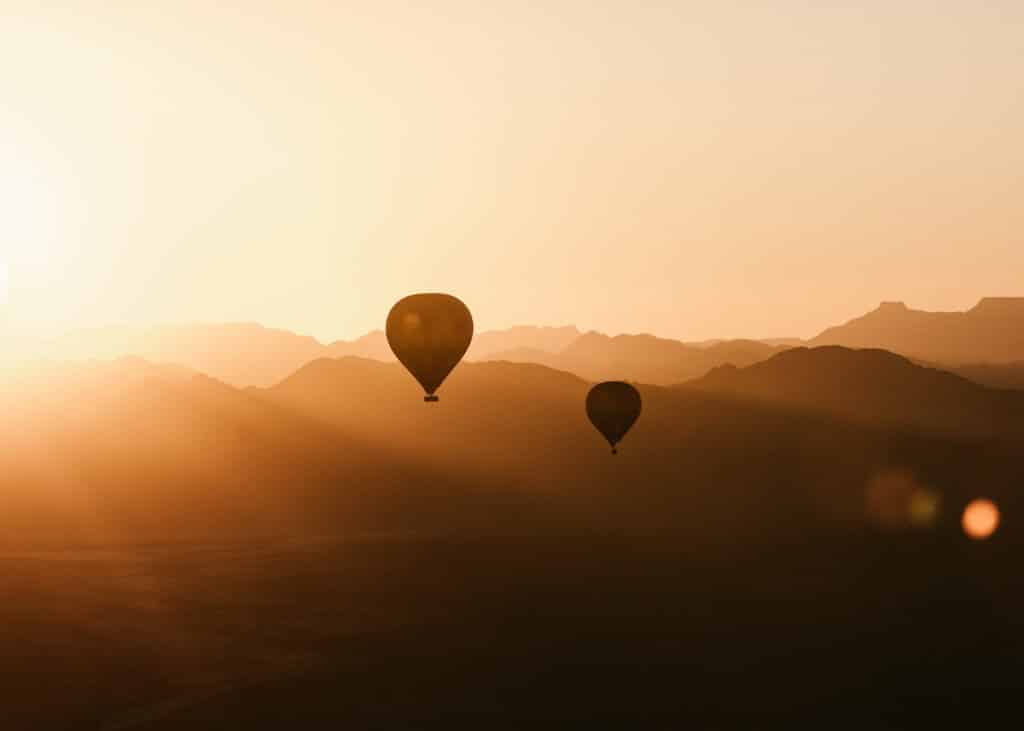

Second stop: Swakopmund & Spitzkoppe
Next up is Swakopmund. This vibrant town is nested between the desert and the sea. It shows a totally different, more luxurious side to Namibia. The seaside promenades, fresh fish restaurants and colonial buildings attract many tourists and ginormous flocks of flamingoes. Spitzkoppe is about 2 hours away from Swakopmund. If you like dramatic landscapes, you’re in for a treat. The Spitzkoppe mountain range as often referred to as ‘The Matterhorn of Namibia’, exists of 120 million years old granite peaks. There are no tourists around, just us. What a powerful and liberating feeling that is!
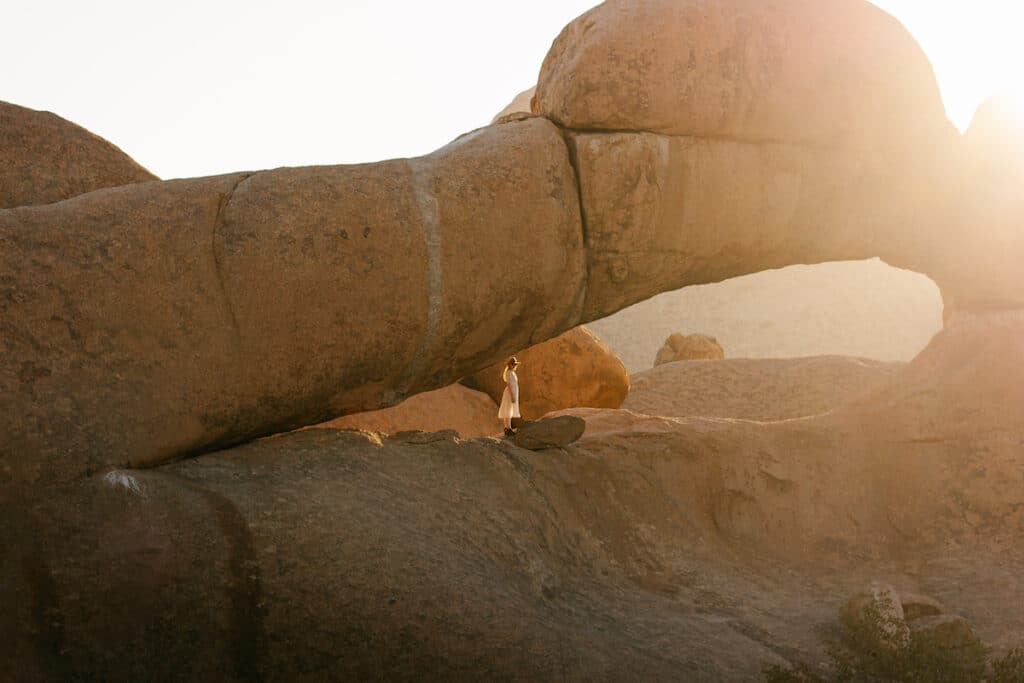
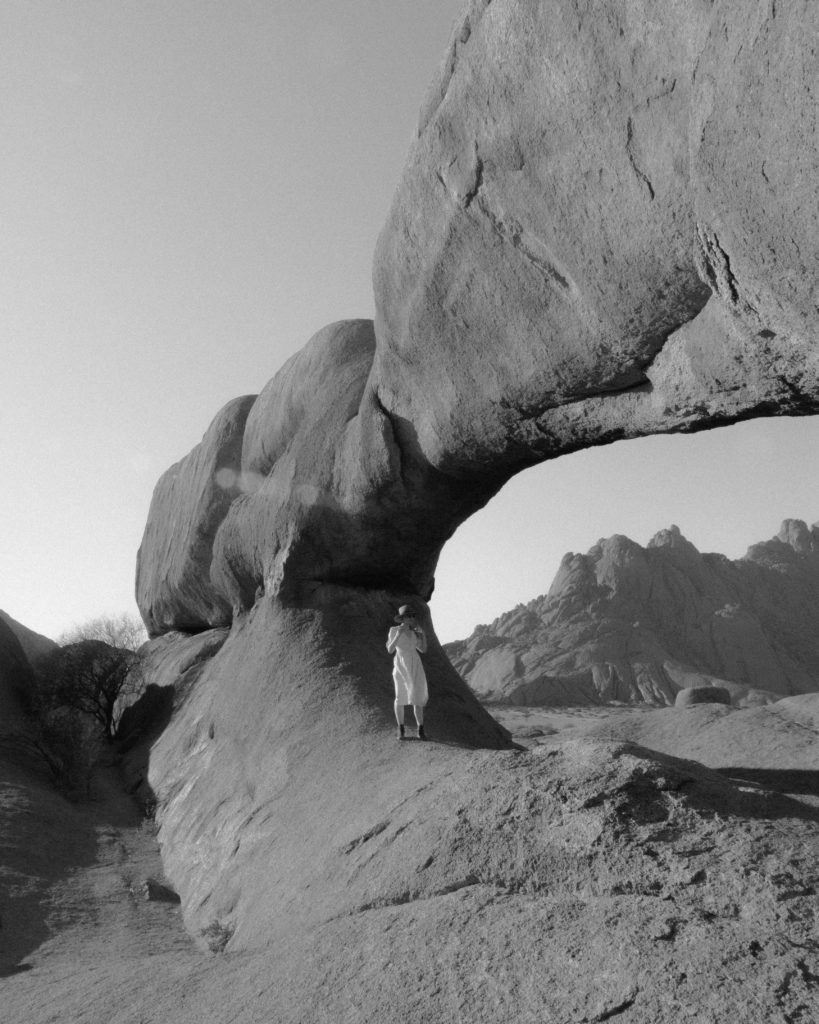
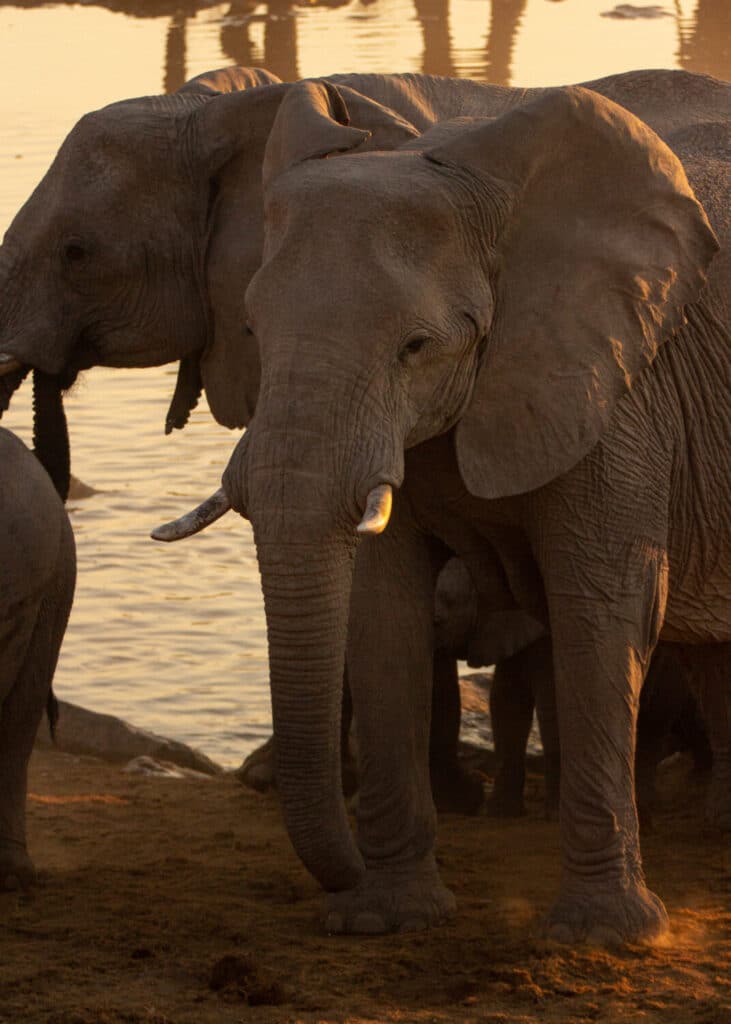

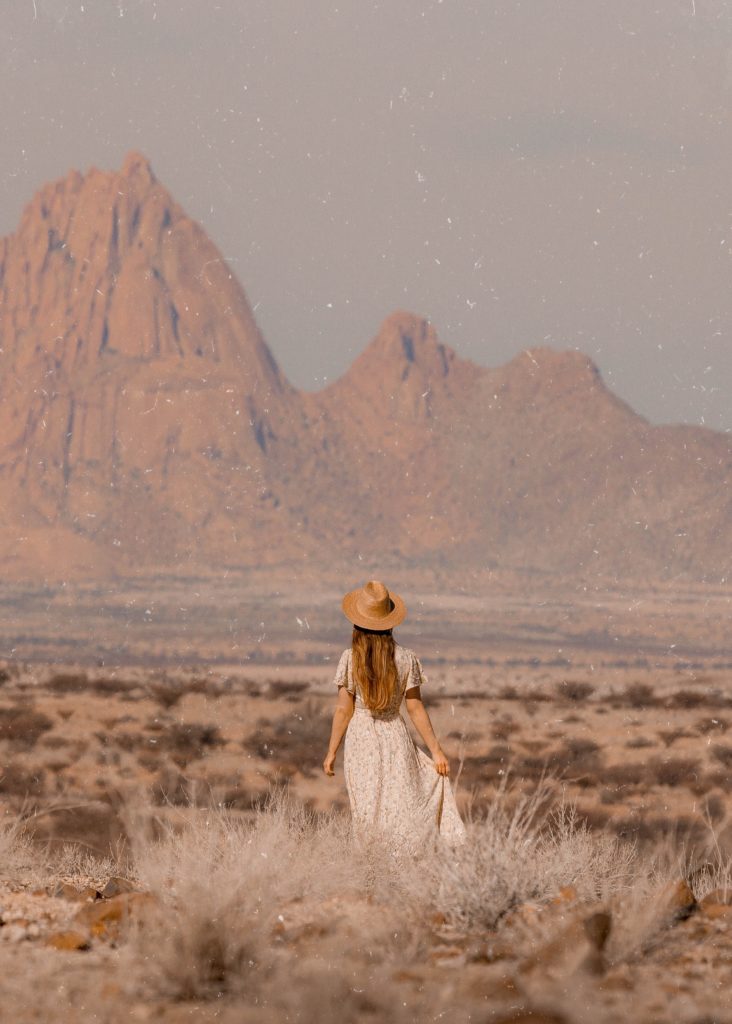
Third stop: Etosha National Park
We see many animals along the way, but the official game drive starts in Hobatere at the Etosha National Park. I go in detail about the safari experience in THIS post. Seeing animals in the wild is an indescribable feeling. Picture zebra herds, steenboks, ostriches and giraffes all drinking from the same waterhole. It’s just like an image from a children’s book. The same day we witness a family of elephants bathing at sunset.
An other showstopper are the Twyfelfontein rock engravings. They are situated in Aba Huab and belong to the Unesco World Heritage. I find it interesting to learn about the ancient tribes and their advanced communication skills while visiting the open air museum. What a beautiful legacy!
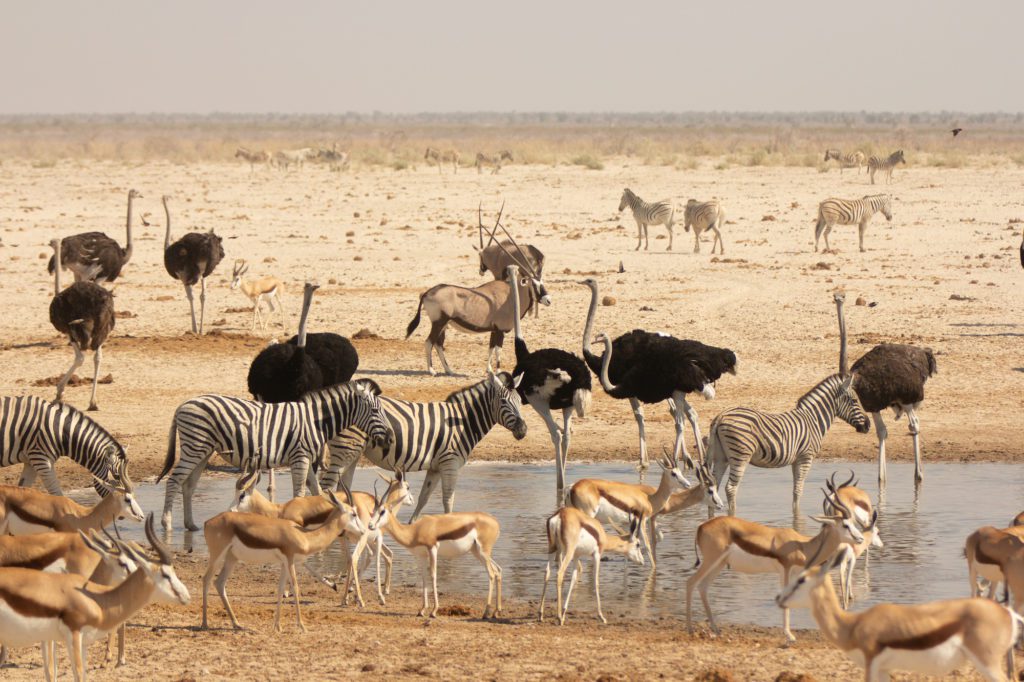
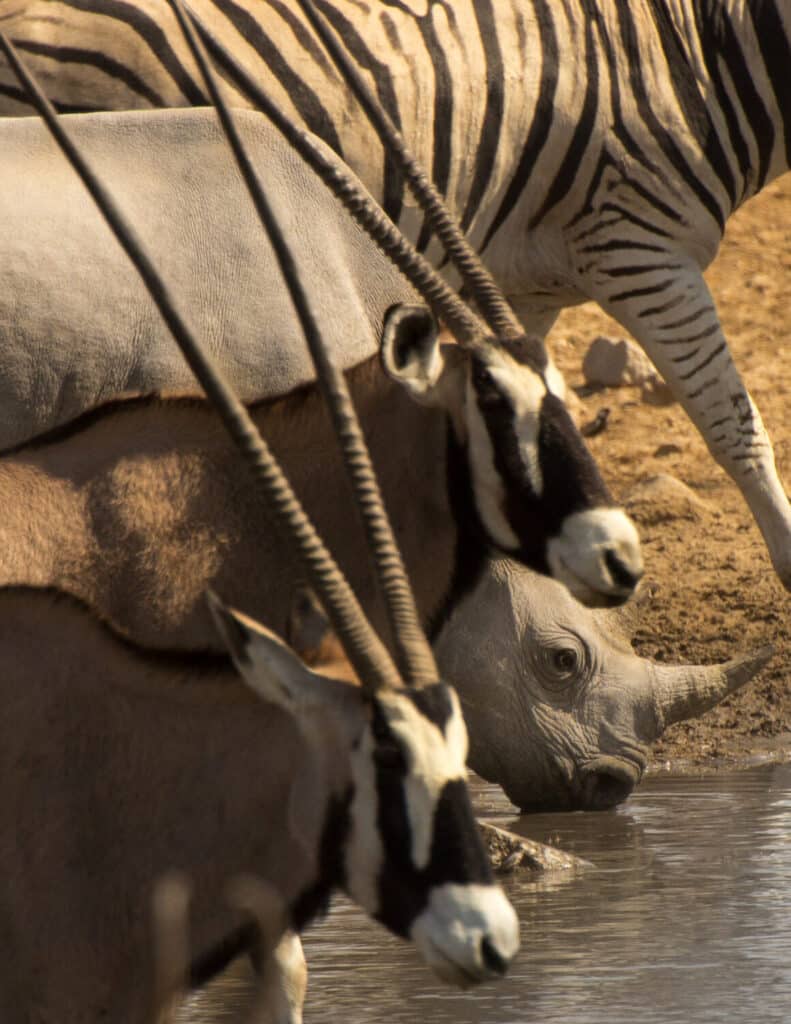
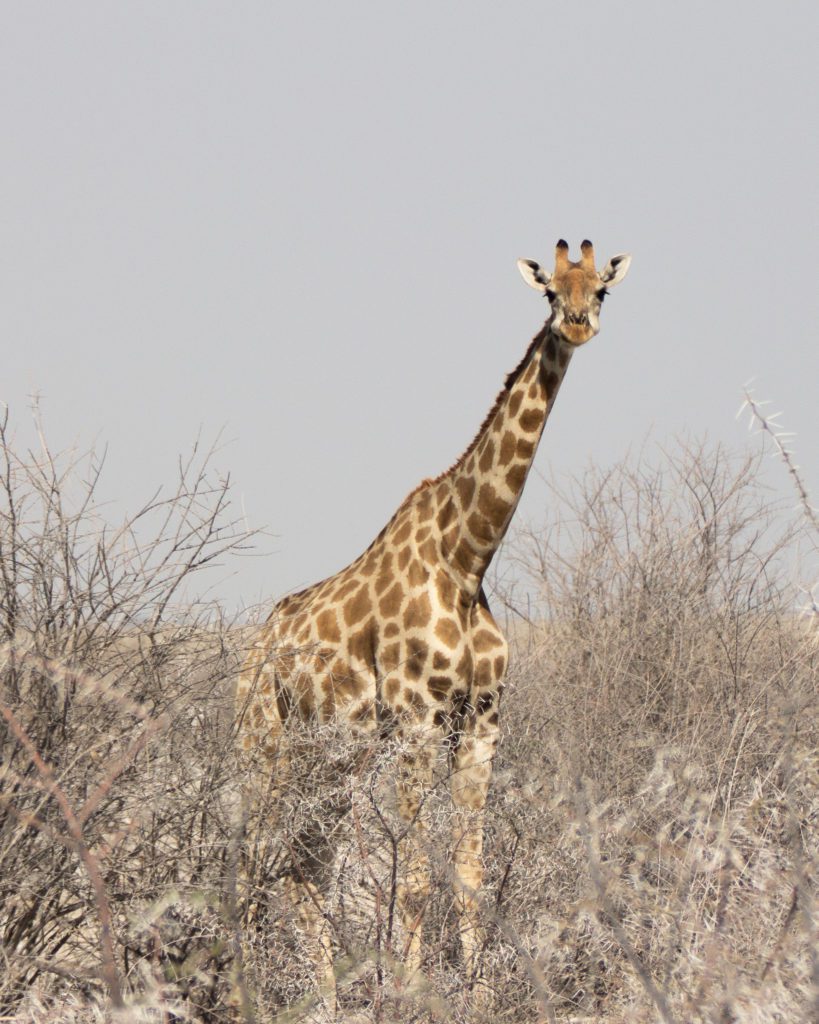

Meeting with the Himba Tribe
Where the locals paint their hair and bodies
You know what lights me up? Hanging out with new cultures, listening to them and learning from them. One of our guides sets up a visit for us, with the ancient Himba tribe. It doesn’t take long to acknowledge how strong their female bond is. Even though they often share the same husbands, these women stick together no matter what. We also get to experience their little beauty ritual. The red paste they put on their bodies keeps body odor and bugs away. It smells like earth and herbs, I love it! Trying it on my own body feels very special and grounding. I feel honored to be invited into their home. My favorite memory of Namibia, by far.
In conclusion
Namibia is a country of many superlatives, also when it comes to contrast. I see a lot of poverty but also a lot of joy and compassion. For many locals farming and tourism are the only source of income. Some will sell precious handcrafted (art) work or gemstones, others will sell wild animals. That’s unfortunately the brutal truth. However, the locals I meet are helpful, spontaneous and show genuine respect towards their country.
It’s the people we meet along the way who make your journey special… It’s our fantastic tour guide, Mr. T, sharing our lunch with the local farmer or that little boy at the gas station smiling from ear to ear after receiving a bag of crisps from us. Little acts of kindness like receiving skittles from a student at the airport ‘because you missed your flight, Anna’ or being gifted a bracelet from the Himba’s, these tiny moments mean so much.
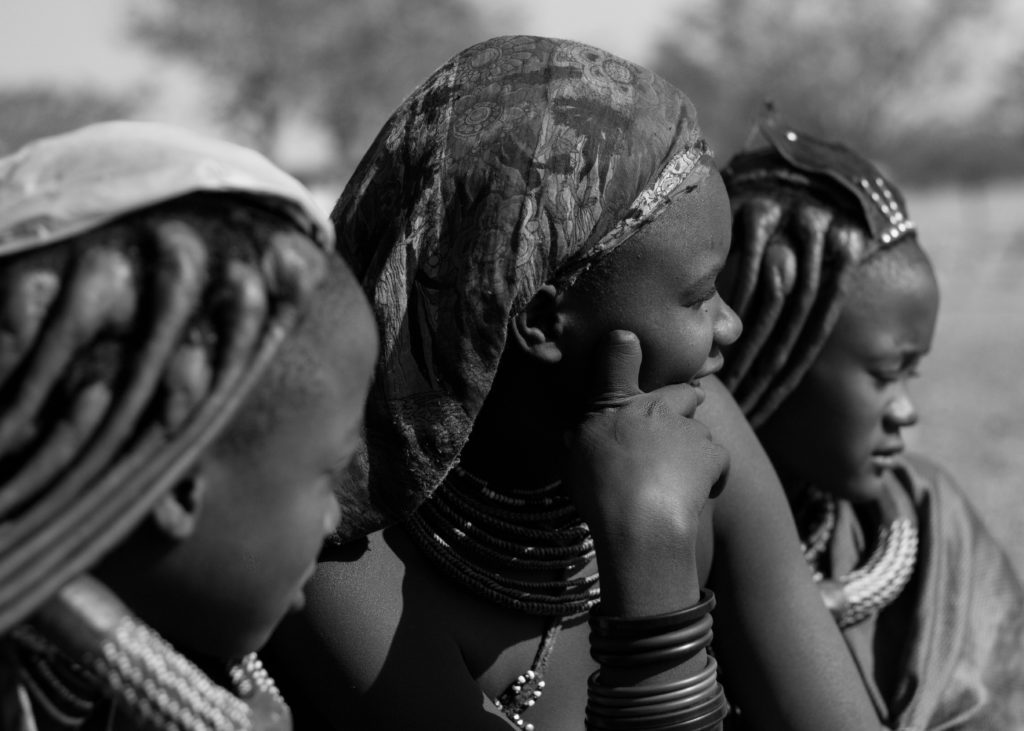

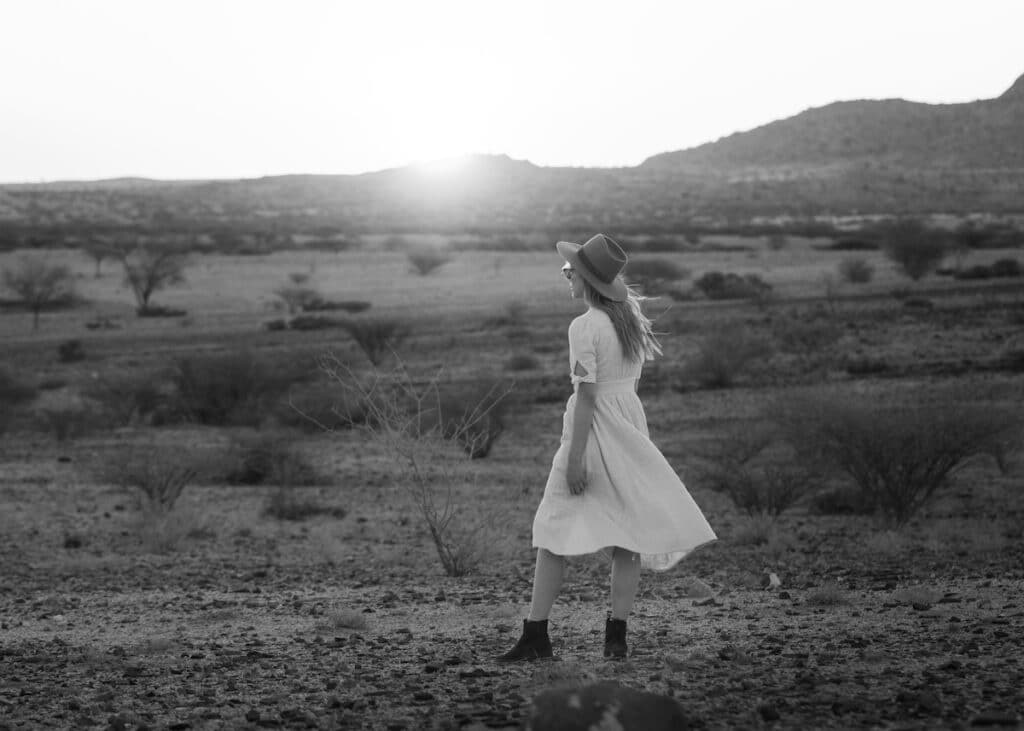
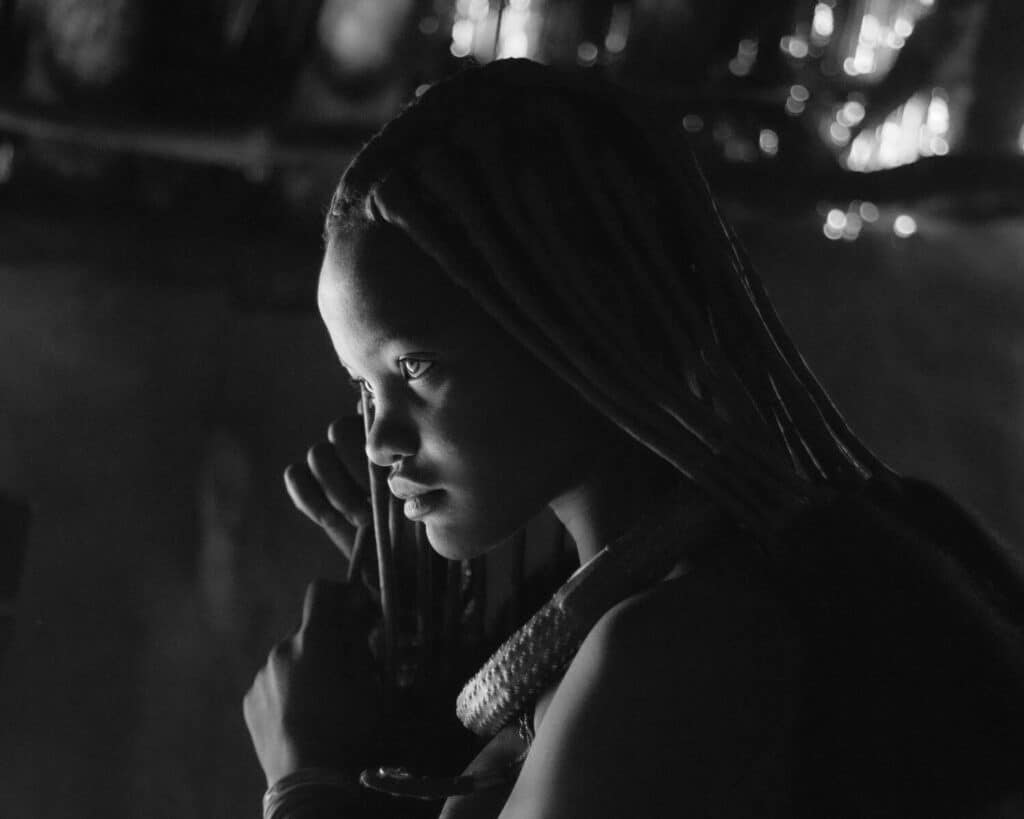
Know before you go
It gets chilly at night in Namibia, so pack enough layers. Beanies, fleece and water bottles help! Also, bring lip balm. I’m very serious. You’ll need lots of it. Somehow my lips get extremely dry in the desert. If you want to keep your camera alive, you need to clean it. Fine sand can cost severe damage to your gear. Drones can be used in some parts of Namibia but definitely not in Etosha National Park, make sure you do some research before you fly one up. They will be sealed when entering most Wildlife Reserves. Last but not least: keep your shoes inside the tent. If you forget to bring them in, wild animals will most probably chew them up thinking they are food.
